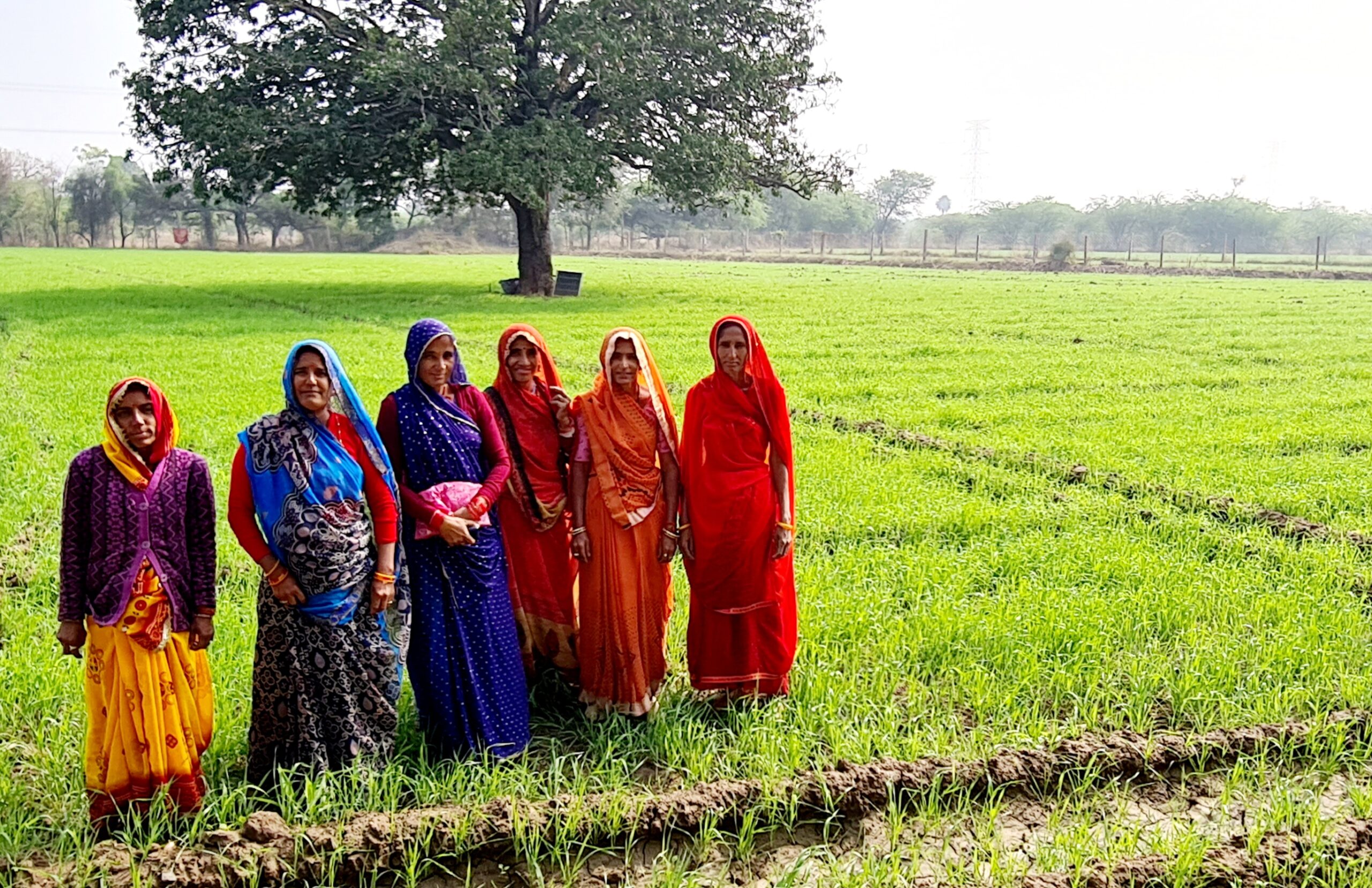By Neena Bhandari
Sydney, 02.08.2024 (The Hindu): In a burgeoning real estate market, three eminent architects – Dean D’Cruz, Gerard da Cunha and Arminio Ribeiro – go down memory lane and reflect on how Goa has transformed from a tranquil haven into a bustling hub as tourism and construction take centerstage. They underscore the need for environmentally and socially responsible policies and planning to foster sustainable communities, where cultural heritage and modern development can coexist in harmony.
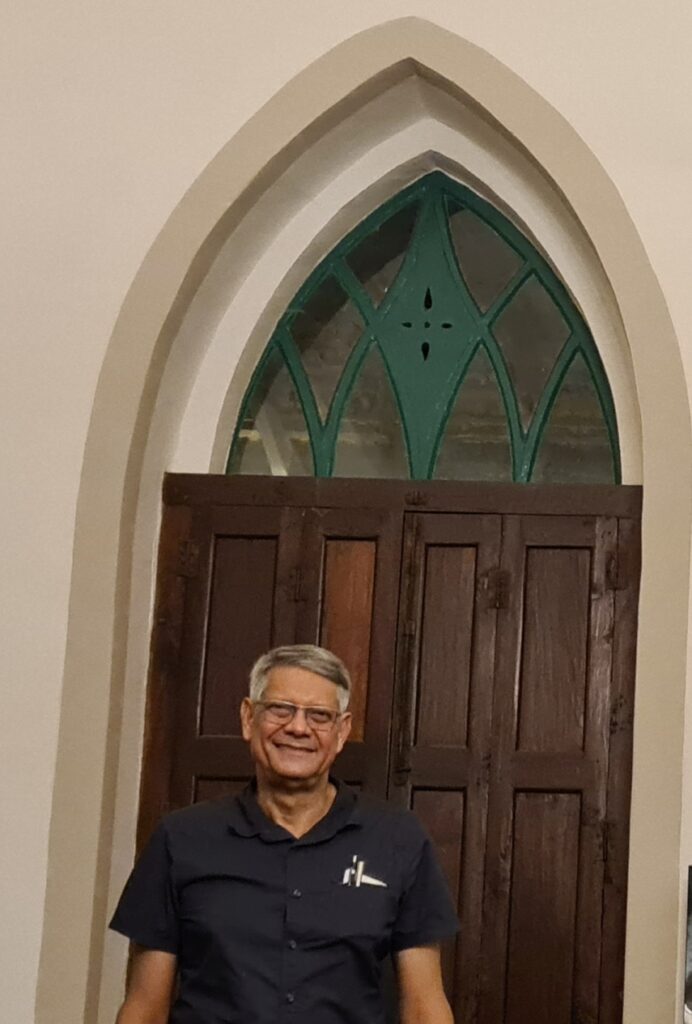
Embrace local ethos in construction and tourism, says Dean D’Cruz
Dean D’Cruz, co-founder and principal architect of Mozaic, recalls waking up to a rooster crowing and the aroma of curries simmering on woodfired stoves in his uncle’s home, where the extended family lived together. It was a cohesive existence that permeated their village, Saligao, in Goa.
He has meticulously restored his 105-year-old Portuguese-style villa, nestled in a quiet green corner of Saligao, where I meet him on a rainy evening. The home has been progressively restored from about 50 years ago. A staircase leads to the balcao (a porch) that overlooks a courtyard garden. The main verandah features columns crafted from single pieces of Burma teak and the flooring is adorned with Spanish-Portuguese tiles. Inside, two spacious living rooms with original oyster shell windows with pointed arches, flank the entrance. The use of shells is now banned, instead frosted glass can be used in the pointed arches.
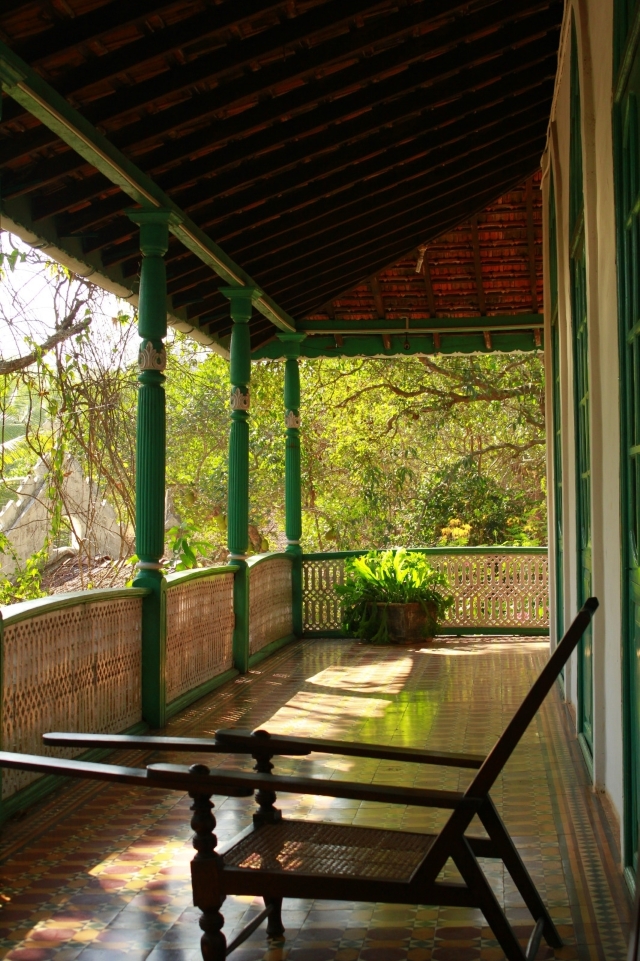
It was in the early 1980s that he returned to Goa after graduating from Sir J.J. College of Architecture in Mumbai. The Hippie Movement was sweeping across the state, and it was slowly emerging as a desirable destination for a retirement home. But there was a dearth of new building construction.
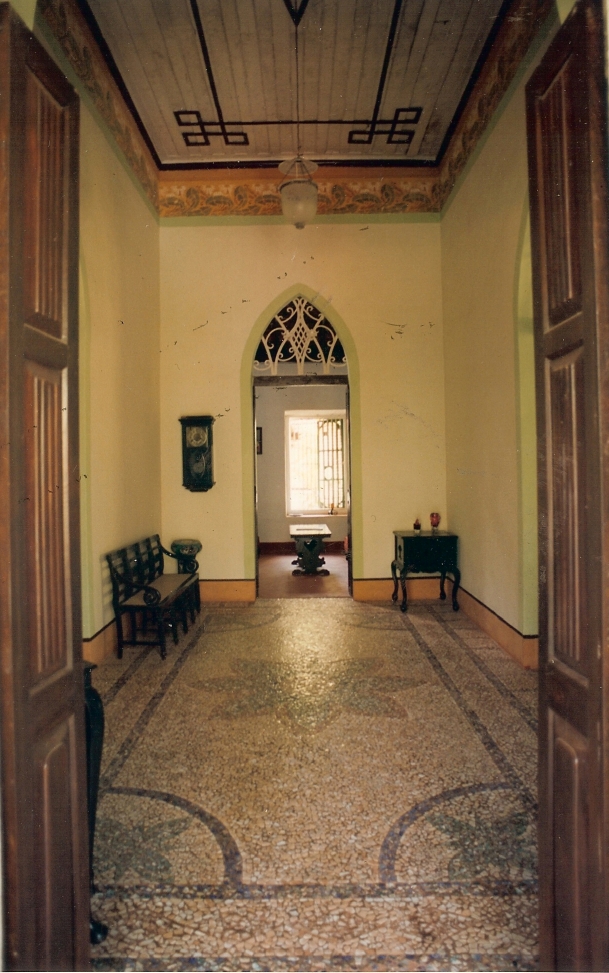
It prompted D’Cruz to partner with architect, Gerard da Cunha. Together, they began harnessing low-cost materials, drawing inspiration from the traditional Goan architecture. They started reusing and recycling local materials, such as laterite stone, brickwork, coconut rafters, waste china mosaic, situ (terrazzo) and Athangudi tiles to design affordable retirement homes for people who really needed them.
D’Cruz still receives requests to design retirement homes from people, he says, who genuinely want to make Goa their final home, imbibe its cultural ethos, and consciously protect its fragile ecology.
In recent years, Goa has become a coveted destination for people wanting to build their second or third homes. It has led to the proliferation of a new architectural paradigm, driven by consumerist desires for luxury and exclusivity.
“These homes are outlandish, fully air-conditioned with all the frills, such as swimming pools. This new architecture is really changing the ethos of the place”, says D’Cruz. “It’s putting immense pressure on the land and resources – water, electricity and spaces for parking. Moreover, this surge in demand for expansive mansions has driven up cost of land, building materials and construction, placing local Goans out of the residential market”.
“Sadly, the second and third home market is increasing in Goa; and even worse a speculative market is emerging where people are building only to resell immediately”, he adds.
This shift has created a dichotomy between accommodating the demands of a burgeoning real estate market and conserving Goa’s cultural and environmental heritage. In villages with a huge demographic change, isolated, elitist enclaves characterized by gated communities and absentee homeowners is changing the social fabric.
“These homes are in a way dead real estate unlike hotels, which are efficiently used and provide employment to the locals,” D’Cruz adds. There has been a spurt in hotel construction, especially around the new Mopa airport in North Goa.
D’Cruz has designed from boutique hotels, such as Nilaya Hermitage in Arpora, Pousada Tauma in Calangute; to jungle lodges for the Taj and other groups like Jehan Numa Retreat; and 200-room resorts like Club Mahindra Holidays, Assonora.
He has also designed a number of institutional projects like the Pallottine Institute of Philosophy and Religion – Assagao, Thomas Stephens Konknni Kendr and more recently a number of homes, homestays and small hotels.
However, one positive outcome from new arrivals to the state has been the revival of many dormant villages, such as Assagao. But D’Cruz stresses that development has to be balanced with impetus on sustainable land use, educational institutions, local marketplaces, healthcare and recreation centers that cater to the overall needs of these growing communities.
He points out that communal engagement is vital to preserving Goa’s heritage. So, it is important that development integrates spaces for human interaction, such as a chapel or a local market, that formed the focal meeting point for the village community.

Many Goans are opening their homes as homestays for tourists. It is providing owners the income to maintain these old homes and at the same time offering visitors a genuine Goan experience. D’Cruz ran a part of his own home as an Airbnb for a while to share the place and its history with visitors. He recommends formalizing and supporting homestays with a listing of the houses and their features so visitors can choose accommodation based on their needs.
Until now beaches have been the main attraction for visitors to Goa, but D’Cruz cautions that by 2050 the state will probably lose enough beaches due to impacts of climate change to make this a non-tourist destination. Already, discerning tourists are finding Goan beaches too crowded, polluted and dirty.
He underscores the need to move towards a more sustainable form of tourism by tapping the potential of resources, such as Goa’s agrarian roots, indigenous cuisine and Indo-Portuguese culture.
D’Cruz regularly conducts workshops, master classes and seminars on architecture, planning and environment, and writes for leading magazines in India and abroad. He has been supporting the Royal Institute of Art, Stockholm; Oxford Brookes University UK; and PRATT Institute New York with architectural and planning programmes in Goa.
Besides running his architectural practice, he is currently dedicated to improving academic standards across the country through awareness of criteria that address environmental and social issues in architecture and planning, being the Design Chair and on the Board of Studies for a number of colleges. He is also actively involved with the Goa Foundation and the Goa Bachao Abhiyan.
Gerard da Cunha: Striving to keep Goa’s architectural heritage alive
Gerard da Cunha’s quest to discover his roots led him to Goa at the impressionable age of 19. His maternal grandparents had moved to Lahore and his paternal grandparents to Mumbai. His father worked in a bank and so they lived in various cities, wherever he was posted. During summer vacations, they would visit one set of grandparents, but never Goa.
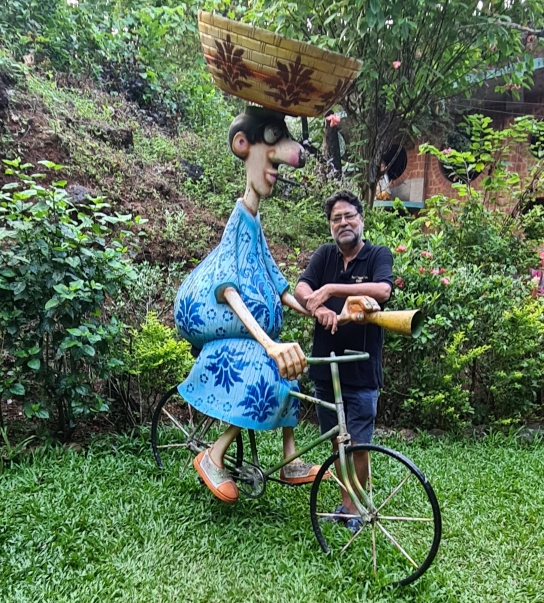
He instantly fell in love with the place, especially it’s architecture, and decided to make Goa his home as soon as it were possible. After graduating from the School of Planning and Architecture in Delhi and working in the national capital for few years, he felt it was time to set up his architectural practice in Goa in 1984.
He was intrigued by the Indo-Portuguese house, which harmoniously blends the double-storey rural Portuguese house and the traditional Goan house designs. He began documenting and photographing these houses, and published the seminal Houses of Goa book written by Heta Pandit and Annabel Mascarenhas in 1999. Around the same time, he held an exhibition of Goan houses in Panjim, which travelled to Lisbon and Porto, Mumbai and Delhi.
The overwhelming success of the exhibition led to the genesis of the Houses of Goa Museum, which became the permanent home for the exhibits. It serves as a homage to the unique fusion of the Indo-Portuese architectural design elements, attracting a regular stream of local visitors, who are fond and proud of their houses; and national and international tourists wanting to get a glimpse of the Goan houses.

The museum, in Torda village, sits as a traffic island within a larger complex that houses a pre-school and a primary school. It helps vehicles to go around and also knits the adjoining buildings together.
Da Cunha says, “It serves as an interpretation center, providing an overview of the different kinds of Goan houses, and also delves deeper into the whole gamut of columns and beams, furniture and music, and the cultural significance of the Indo-Portuguese house”.
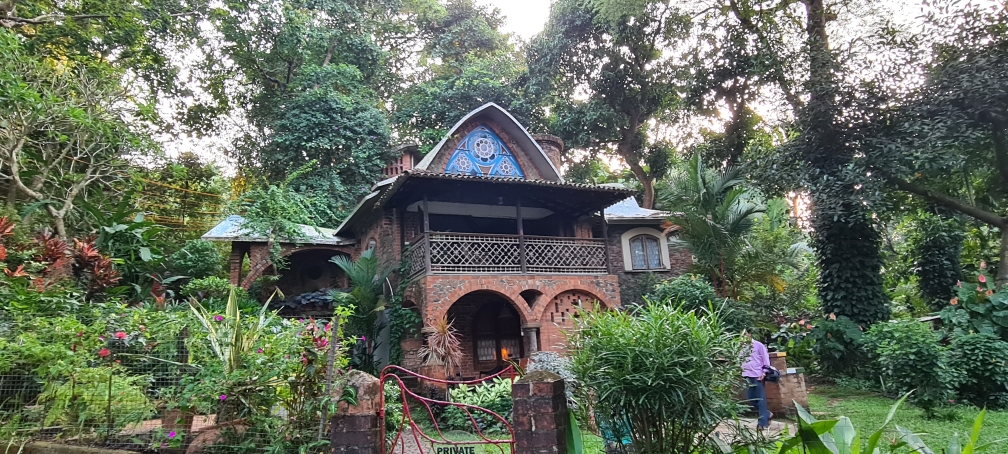
Besides its aesthetic appeal, he explains, “The Indo-Portuguese houses are characterized by their ecological sensibility and use of sustainable low-cost local materials that reflect a deep understanding of climatology. The high ceilings, spacious verandahs, courtyards and a strategic ventilation system are all designed to mitigate the region’s tropical humid heat”.
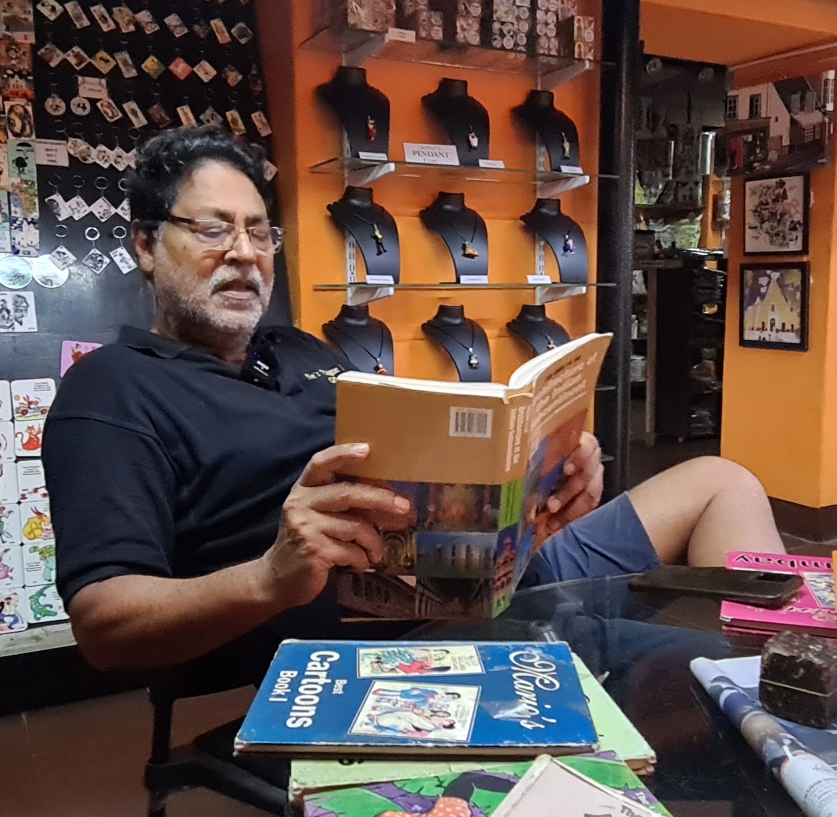
We meet in a 120-year-old home, which is his office and the Mario Gallery. There is a gentle sea breeze flowing through a trellis below the window, cooling the room. The oyster shells on the windowpanes are shimmering in the mellow light of the setting sun. He explains that these shells were picked up from particular river banks and used in houses instead of glass, which at that time was imported from Europe and hence very expensive.
He is committed to using local and recycled materials made from waste. The school building, for example, is made from spare or broken windows, doors, grills, flooring and waste material sourced from students. The walls of the school’s amphitheater are made from 25,000 recycled glass bottles.
The buildings designed by da Cunha, founder and principal architect of Architecture Autonomous, are a testament of his green philosophy. His recent projects in Goa include Panaji’s Mangrove Boardwalk and Krishnadas Shama Goa State Central Library; and current projects include the Panjim Jetty and Public Park at Patto in Panaji.
He believes the next generation of architects and architectural students from all over the country that visit the Houses of Goa Museum and the schools are definitely taking something positive on how waste can be reused and sustainable materials incorporated in design. He used to conduct eight-day residential workshops, where architectural students stayed in tents and built with their hands.
Each year, about 1500 students attend the half-day workshop and learn hands-on from the award-winning architect about his design philosophy and the buildings. “I believe in spreading my message through firsthand experience. I am in the process of setting up the Museum of Indian Architecture, which will be part of the complex”, says da Cunha, who has recently published the Vernacular Architecture of India book by Tejinder S. Randhawa.

He has also been promoting the legacy of Mario Miranda by leveraging merchandise and publications featuring the renowned Goan cartoonist and painter’s iconic artworks. This has helped raise the much-needed funds to support the artist’s family and also provide employment to local people.

From fridge magnets to apparel imprinted with his works, for example, are gifted at numerous international conferences held in Goa; a picture of Mario is printed in a book on linguistics, published from London every two years; and recently a restaurant in Manchester (UK) has bought Mario’s works to display.
“Mario’s works are socially relevant and have an enduring appeal, resonating both locally and internationally,” says Da Cunha, who is striving to keep his legacy and Goa’s architectural heritage alive.
Arminio Ribeiro: Conserving the essence of Fontainhas
Arminio Ribeiro’s ancestral home, built by his grandfather in 1915, is a stone’s throw from the whitewashed Saint Sebastian chapel in Fontainhas – Goa’s oldest Latin quarter, tucked away from the din of the capital city, Panjim. He returned to this home of his birth in 2000, drawn by the familiar neighborhood and its close-knit community.
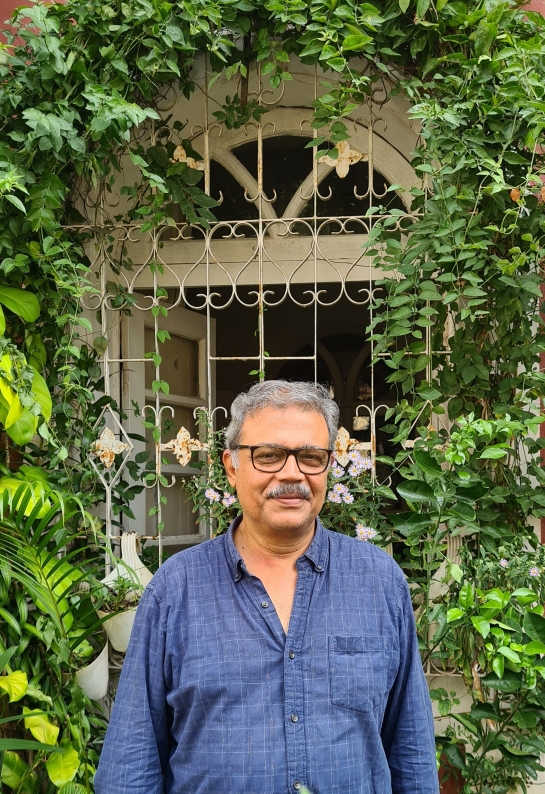
“It was like returning to a large joint family with its share of fun and occasional friction”, says Ribeiro, whom I meet in the rear part of the house, which has been his office since 1996.
Many families, like Ribeiro’s, have resided for generations in Fontainhas, which was originally part of Talegaon village. It is only around mid-19th century, with the administration relocating to Panjim from Old Goa, that urbanization plans began to take shape, connecting residential and work areas.
A passage, Corte-de-Oiteiro, was carved through the Altinho Hill that extended all the way to the chapel, which has been the epicenter of community gatherings and functions. Open plots and traditional homes of the original occupants, such as fishermen and clerks, were purchased by the new occupants, who were professionals, academicians and administrators.
“The latter benefitted from the proximity of the [Fontainhas] neighbourhood to their workplace. These new occupants re-modelled the existing houses, sometimes adding a first floor. Most of the larger houses, accommodating multiple generations, featured a central courtyard. It created a diverse yet interdependent community”, says Ribeiro, an alumnus of the Goa College of Architecture. He recalls the tree-lined narrow streets that used to be their playground and a place for the residents to socialize.
The Portuguese colonial influence significantly shaped the architectural landscape of Fontainhas. The affluent Hindu and Christian families built grand homes with exterior facades in the Indo-Portuguese architecture style and interiors in the traditional Konkan architecture.
“This blend of the two architecture styles created a unique urban landscape”, says Ribeiro. “The traditional Konkan houses were huddled close together mostly with a ground floor and an attic, locally called a maddo. They were inward looking with very small openings on the streets”.
“As the settlements began to become denser, for reasons of health and hygiene, the health office placed conditions for minimum lighting and ventilation standards and disposal of sewage which initially was carried by headloads to nallahs or flowing waterways. The sewerage system was laid only in the 20th century”, he adds.
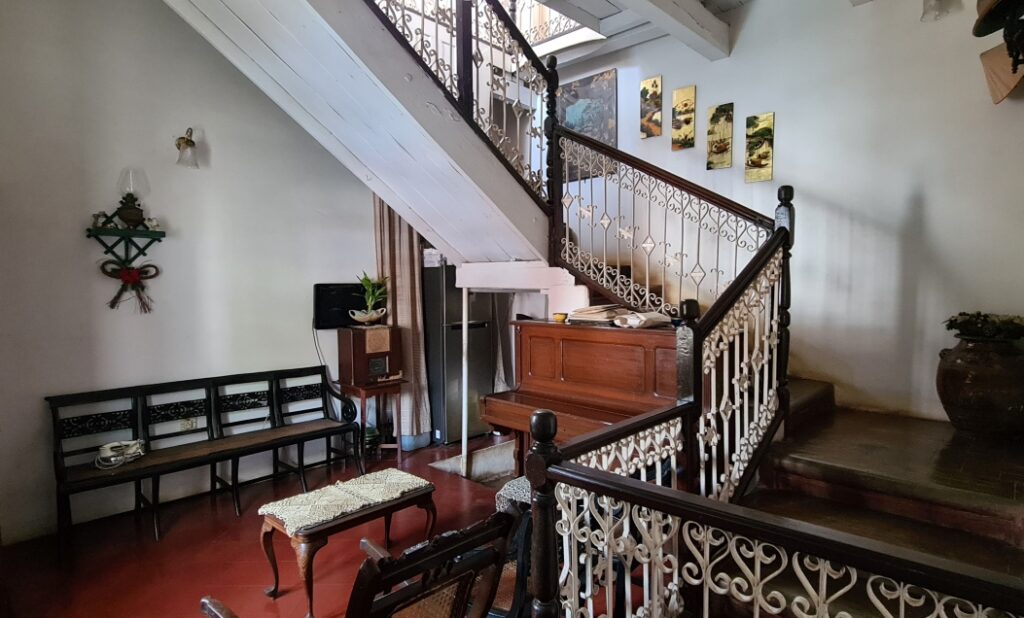
These heritage houses in Fontainhas require structural changes to incorporate modern amenities. Ribeiro has made minimal modifications, such as adding another toilet on the first floor and replacing old toggle electric switches, to preserve the house’s original charm. He has been mindful that the heritage belongs to the extended family as well, and he wanted to retain the memories of their childhood holidays spent here together.

Fontainhas is a designated heritage conservation zone, but Ribeiro laments that the Conservation Committee has been prioritizing re-construction over conservation. “These houses are beautiful as it is and the facades should not be tinkered in the race to modernize”, he asserts.
In recent years, Fontainhas has become a magnet for tourists, bringing both benefits and challenges. The influx of visitors, especially on weekends, disrupts the peace and the streets are strewn with litter. To escape the chaos, some residents like Ribeiro retreat to their village home, but often find their garden and plants trampled upon on return.
“It is very upsetting,” says Ribeiro, who is passionate about conserving the essence of Fontainhas and has a whole new appreciation for residents of Venice and other European cities overwhelmed by tourists.
The narrow laneways get choked with vehicles; and with most families owning multiple cars, friction over parking spaces is not uncommon. Despite the challenges, he says that it would take something really compelling to force him out of Fontainhas. The next generation, however, is moving to bigger cities lured by better career prospects.
Many houses are partly vacant, occupied mostly by elders, and maintaining them comes at a price. Keeping this in mind, the regulations permit 25 percent of the homes to be used as a commercial premise.
“It is a good sustainable standard, which while achieving its objectives will also address the issue of overcrowding”, says Ribeiro, founder and head of Arminio Ribeiro and Associates. He cautions that over commercialization could result in destruction of this area. A lot of restaurants, cafes and boutique stores moving into the area are occupying the entire house.
“The high rentals offered by commercial enterprises is causing residents to lease out their entire house and relocate to other wards in the city at a much lower rent. Fontainhas and other residential wards are slowly being emptied of their residents. We know that in the absence of residents, an entire layer of culture stands erased”, he adds.
To preserves the essence of Fontainhas for future generations, he has been advocating for implementation of a carefully considered urban development policy that reconnects the streetscape to the community.
He regularly mentors architectural students on conservation and actively collaborates with other architects and residents of Panaji to save Panjim city’s architectural heritage and culture. This has inspired residents in other cities to take up similar action.
Besides taking a keen interest in restoration and renovation works of heritage houses and buildings, Ribeiro has designed various projects relating to social infrastructure such as educational facilities, halls and community infrastructure for tribal communities, nursing homes, farmer training and facilitation centers.
© Copyright Neena Bhandari. All rights reserved. Republication, copying or using information from neenabhandari.com content is expressly prohibited without the permission of the writer and the media outlet syndicating or publishing the article.


